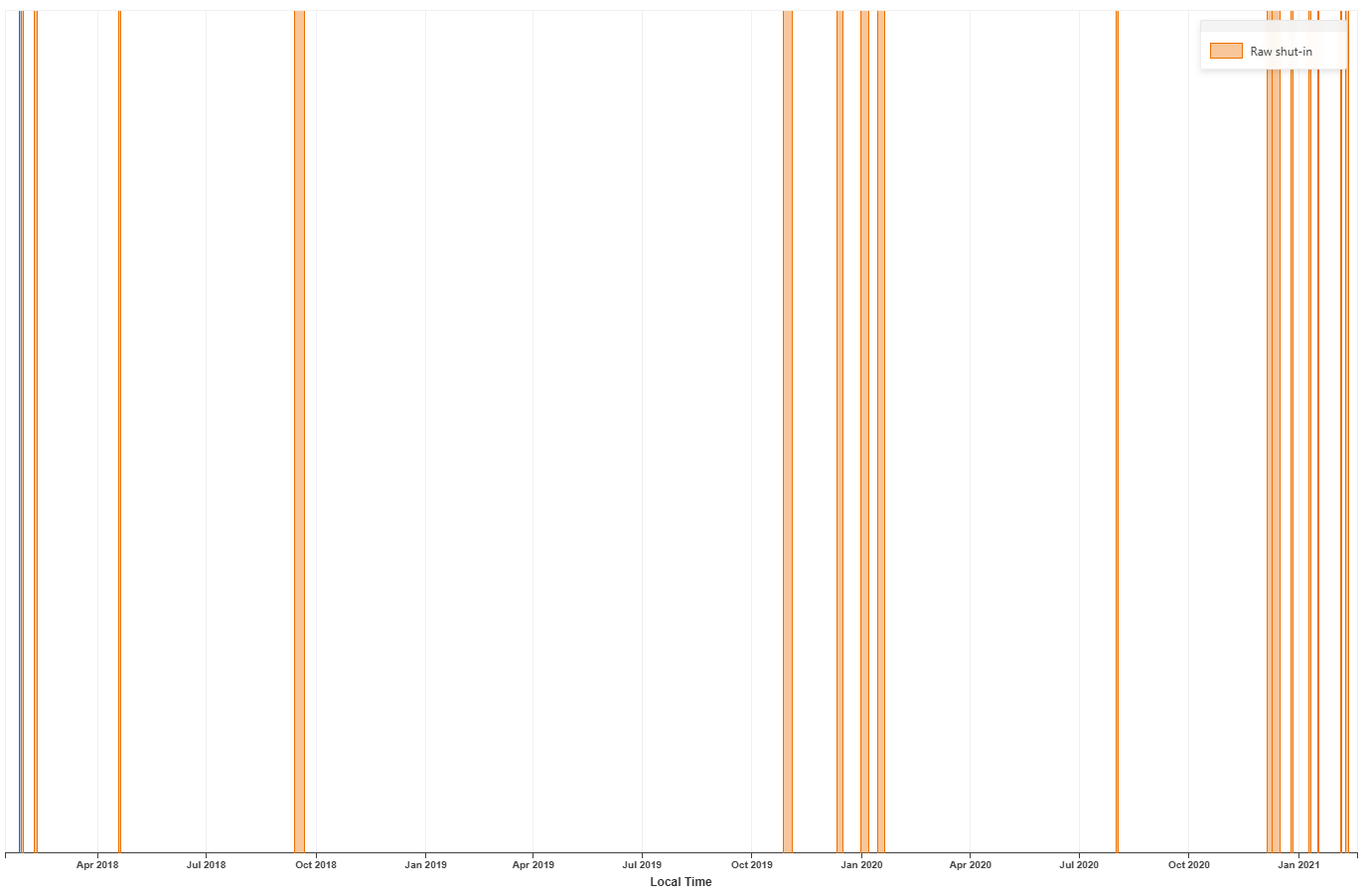Shut in Identification
Objectives
Shut-in Identification (SIID) can be performed on pressure (or temperature) history data. Shut-ins are identified by searching for discontinuities in the pressure (or temperature) data. A tangent crossing algorithm fits tangents at some key points around the transient to identify the start and end of the shut-in period. Identified shut-ins are recorded in a special SIID logical channel that has the value of “1” for the duration of the shut-in and “0” everywhere else.
Input
Input type – pressure or temperature.
Look for – type of shut-in (Bulid-ups or Fall-offs).
Requires validation - Boolean input; when checked, validation by engineer is required.
Minimum pressure change - between the first point pressure and the last detected point pressure
Minimum shut-in duration - detect only the shut-in with duration greater then this value.
Input gauge - pressure or temperature gauge
Input choke gauge optional - when this is available it is used for SI classification
Output
Raw shut-in channel - shut-in detected by the algorithm
Validated shut-in channel - shut-in detected by the algorithm and validated by an engineer
 |
User Task dialog

Raw shut in output
Note
The input pressure gauge is displayed only during the shut-in validation step.